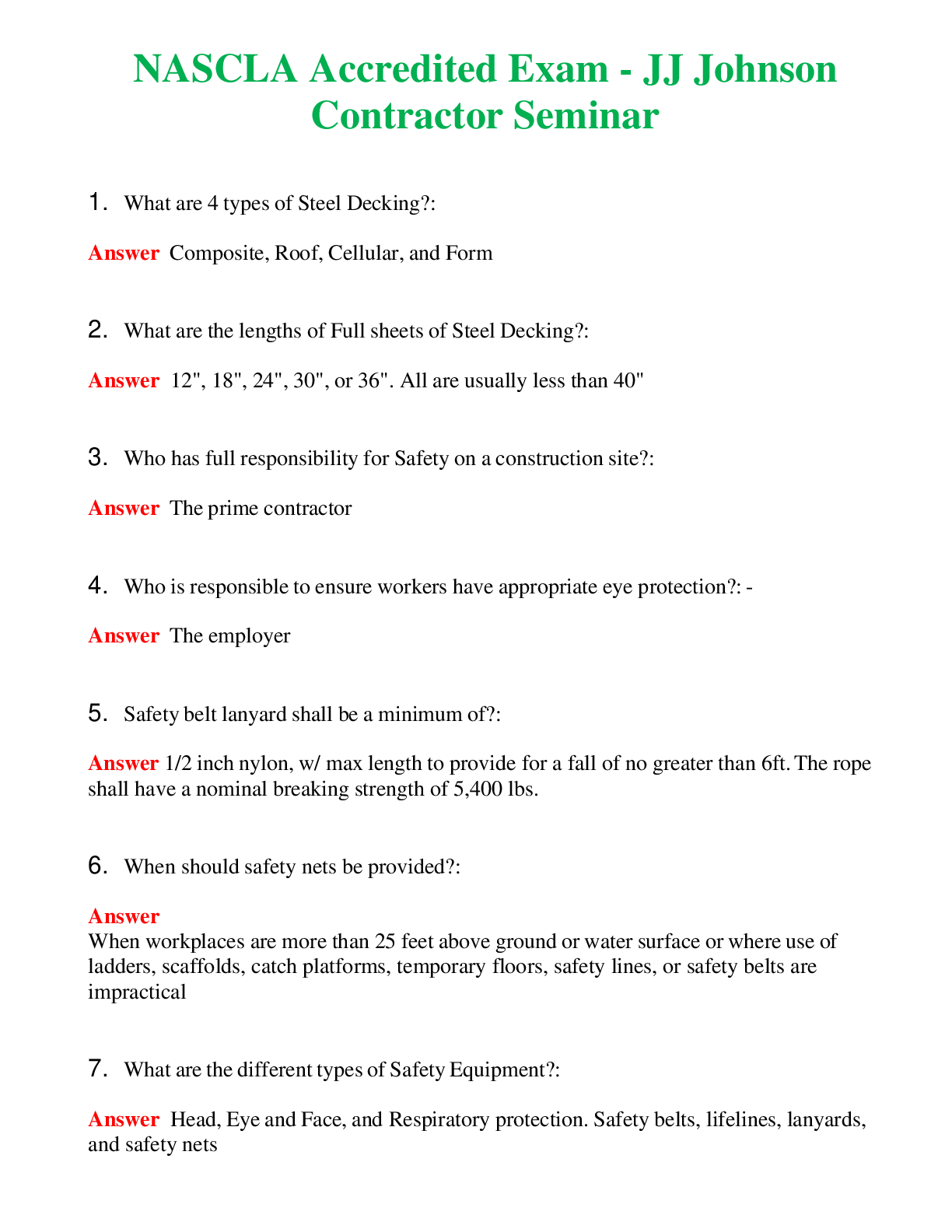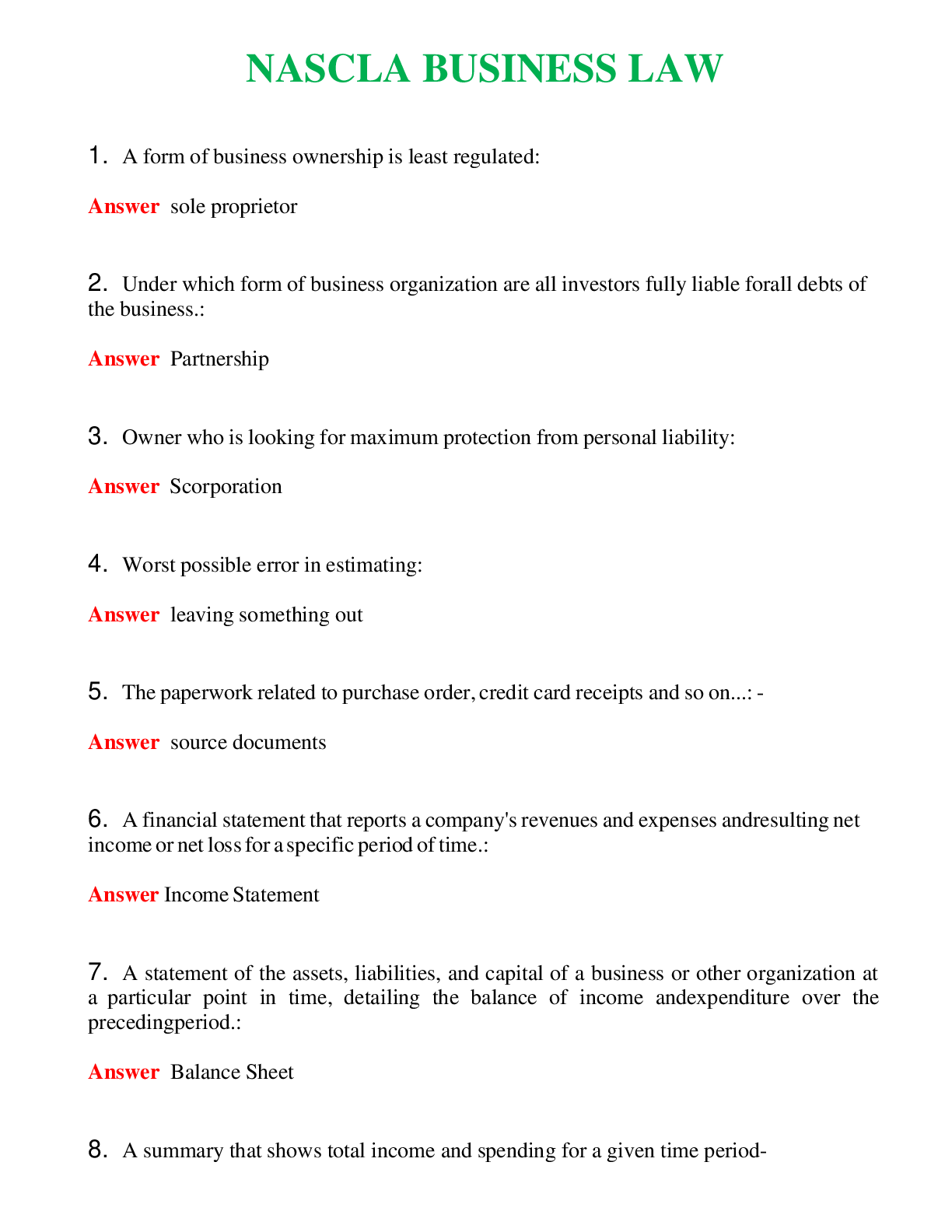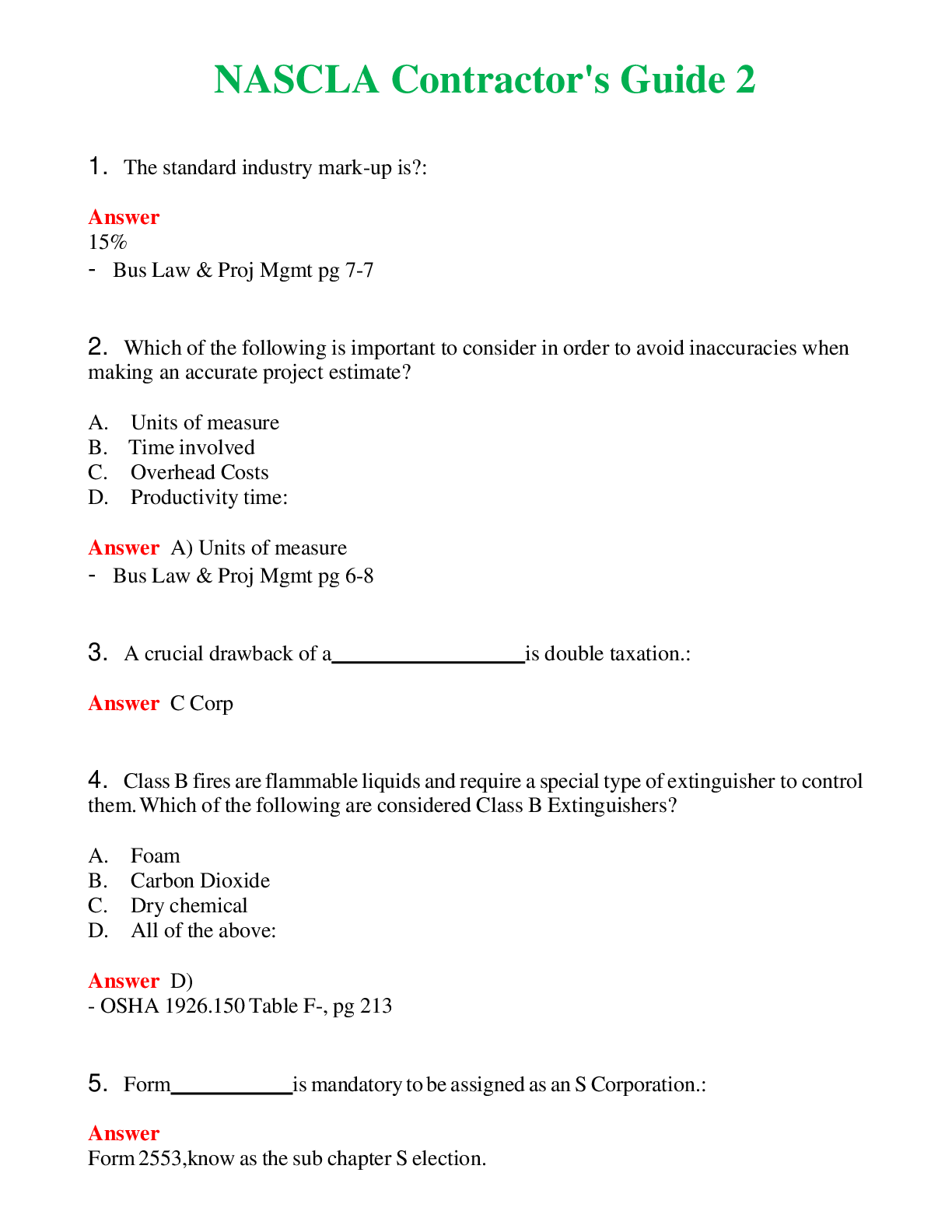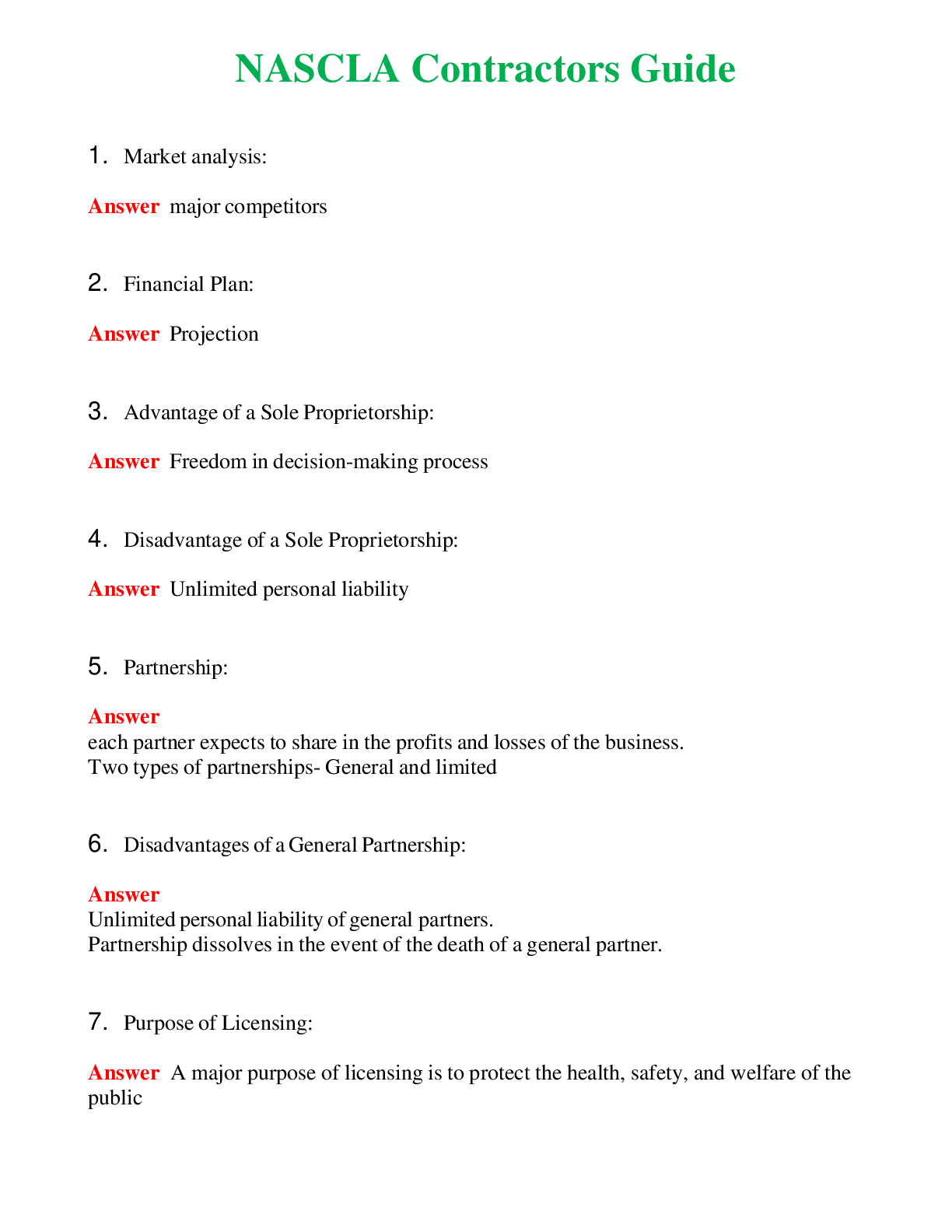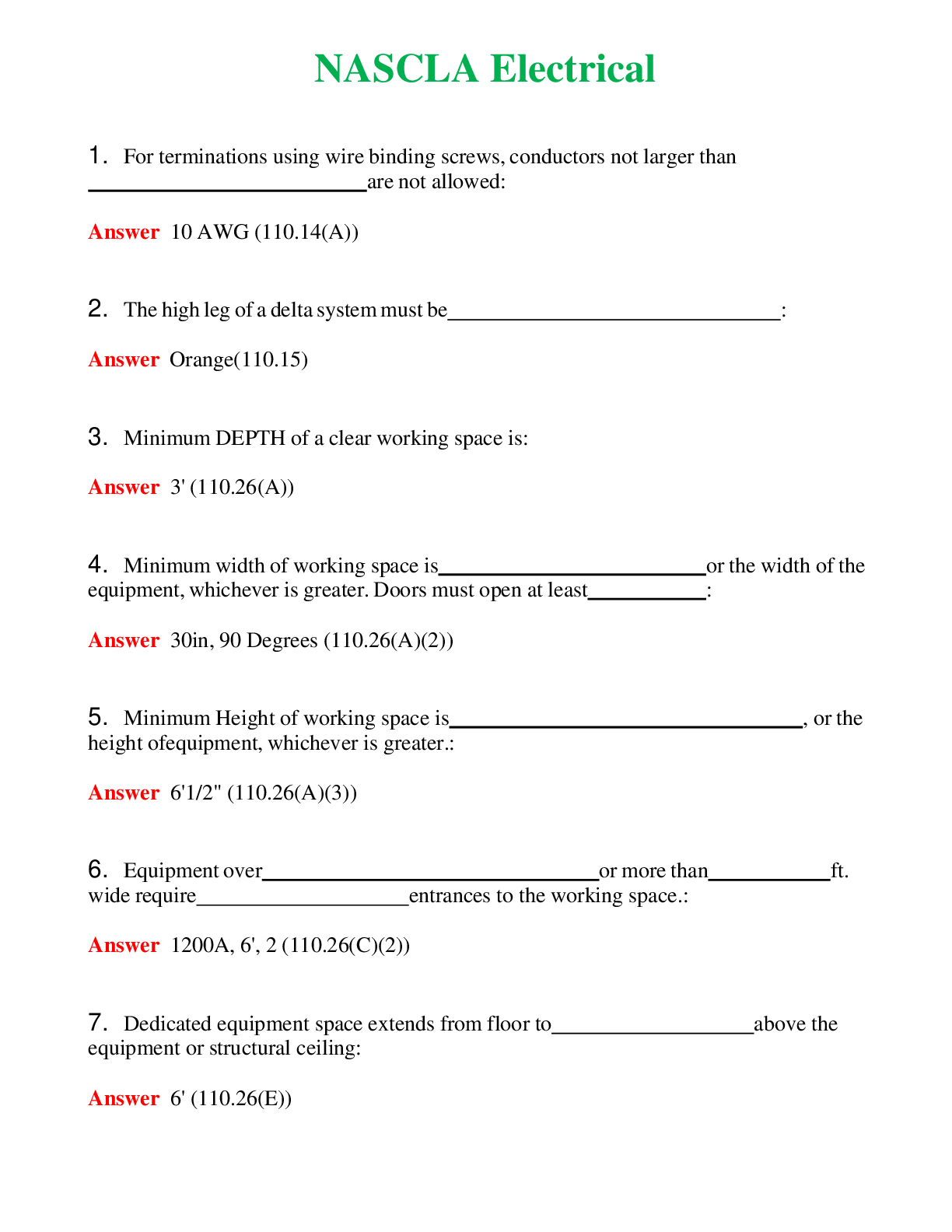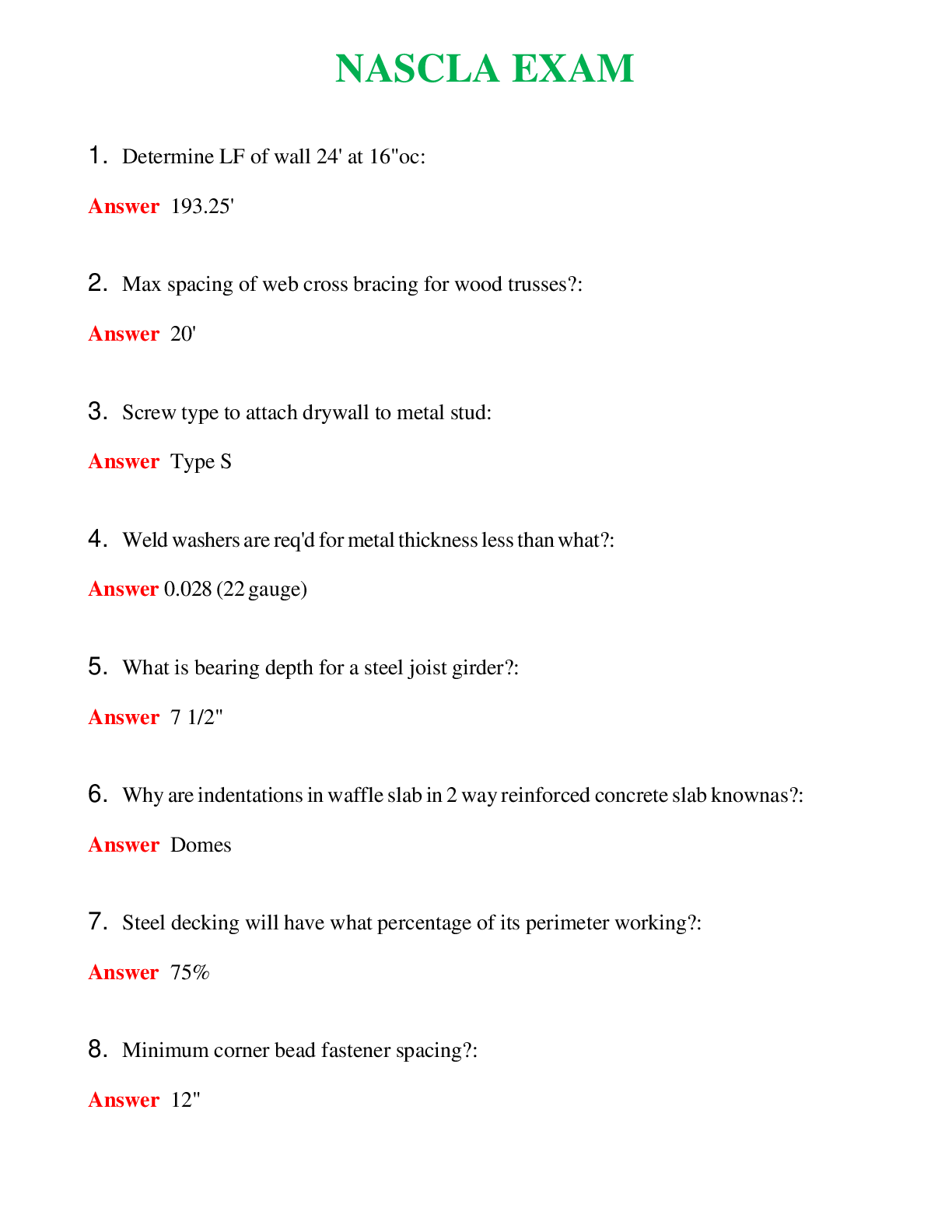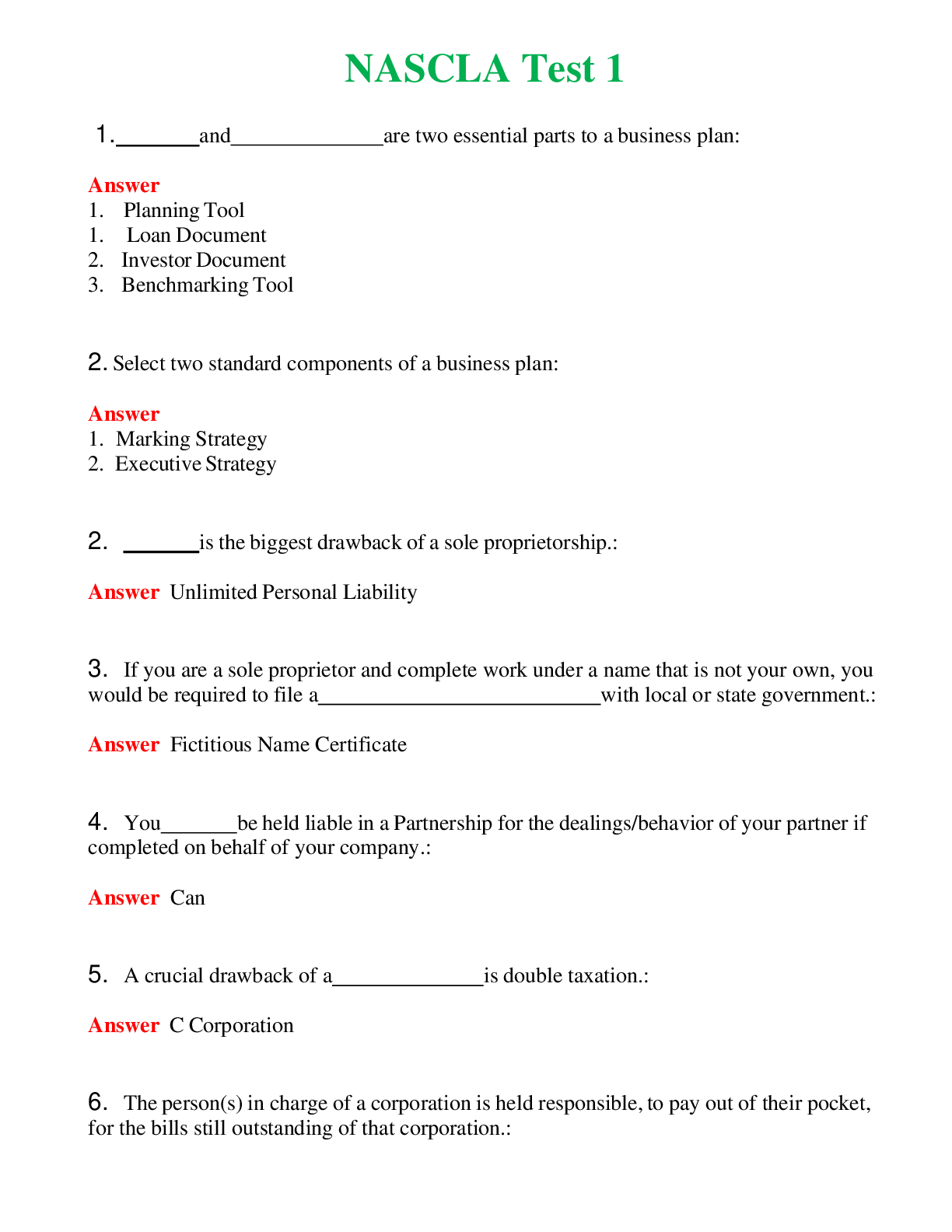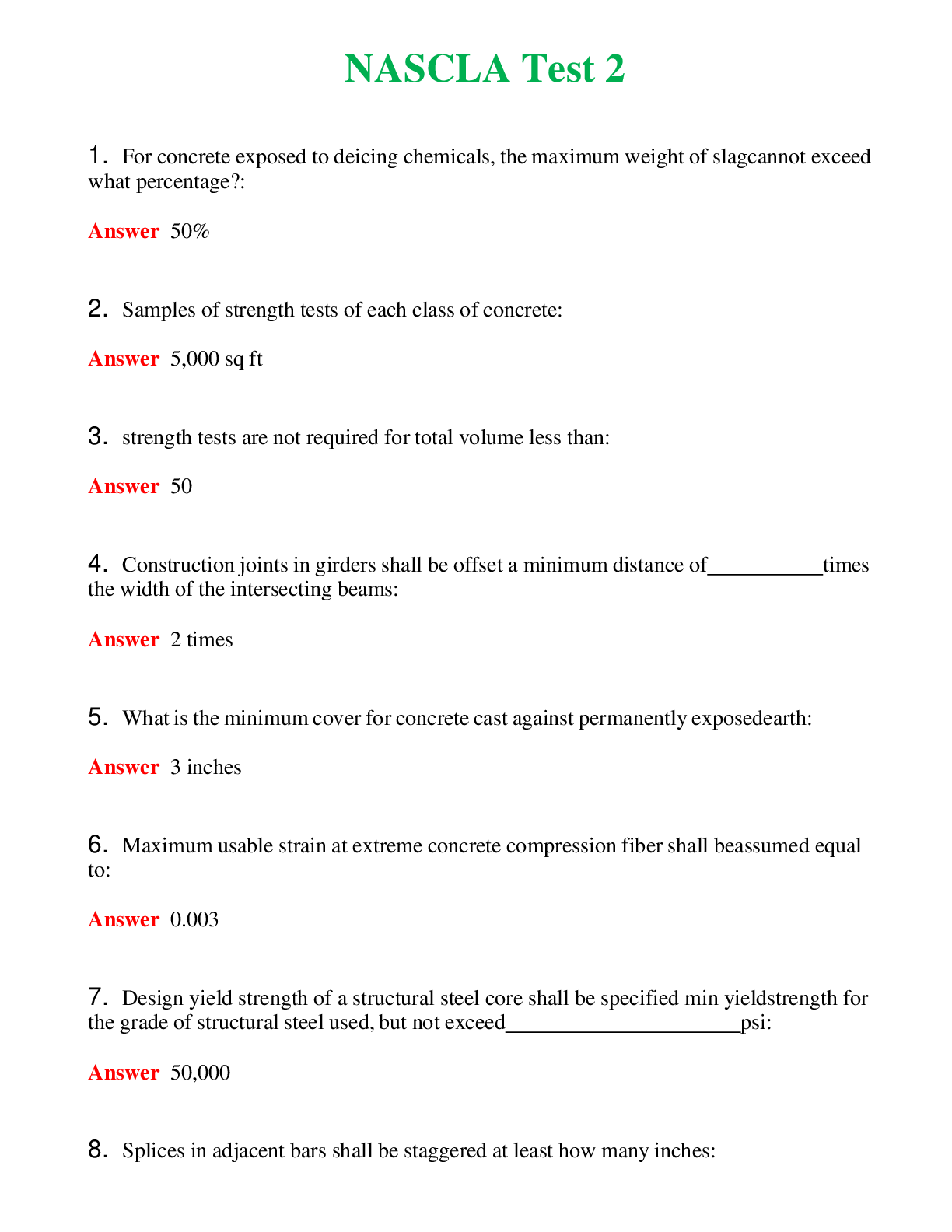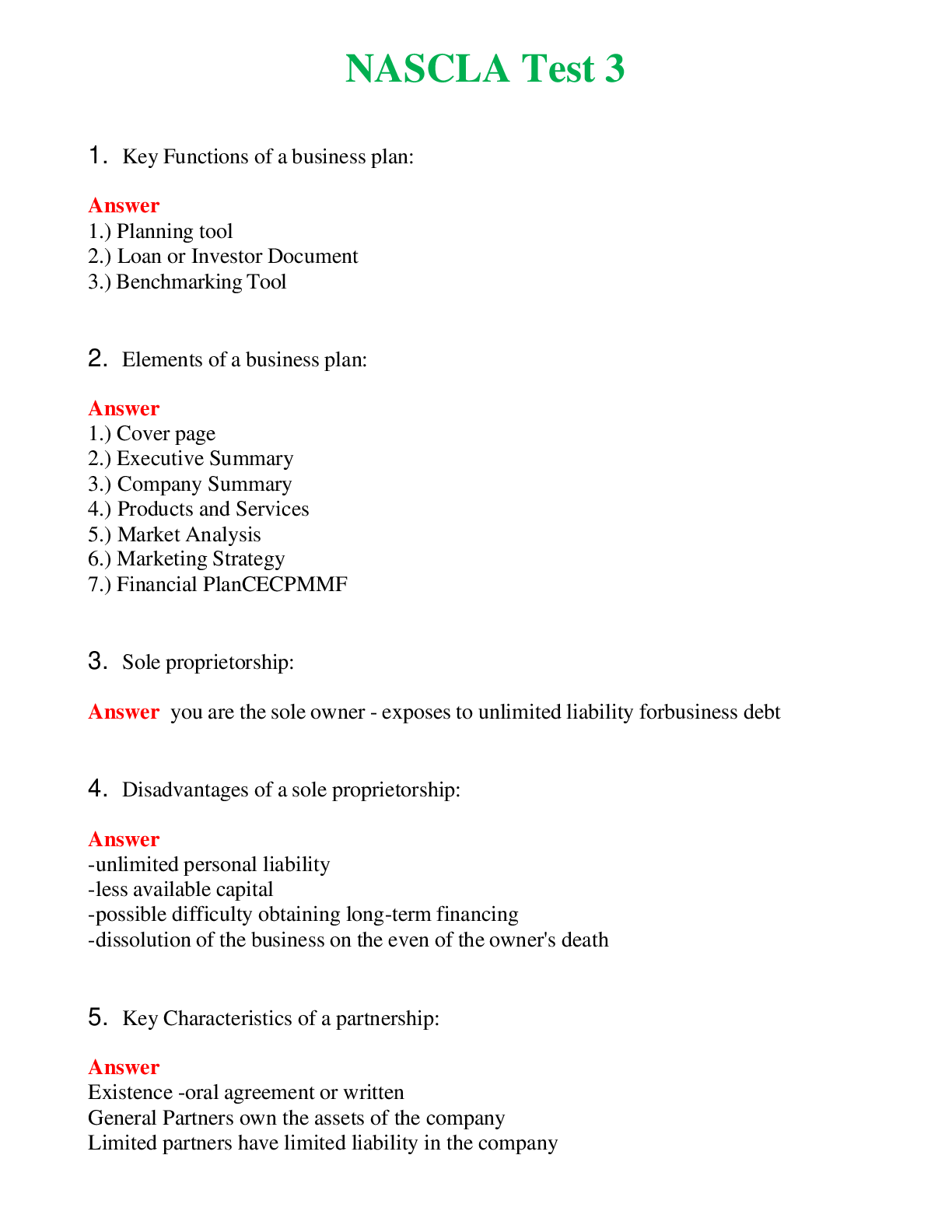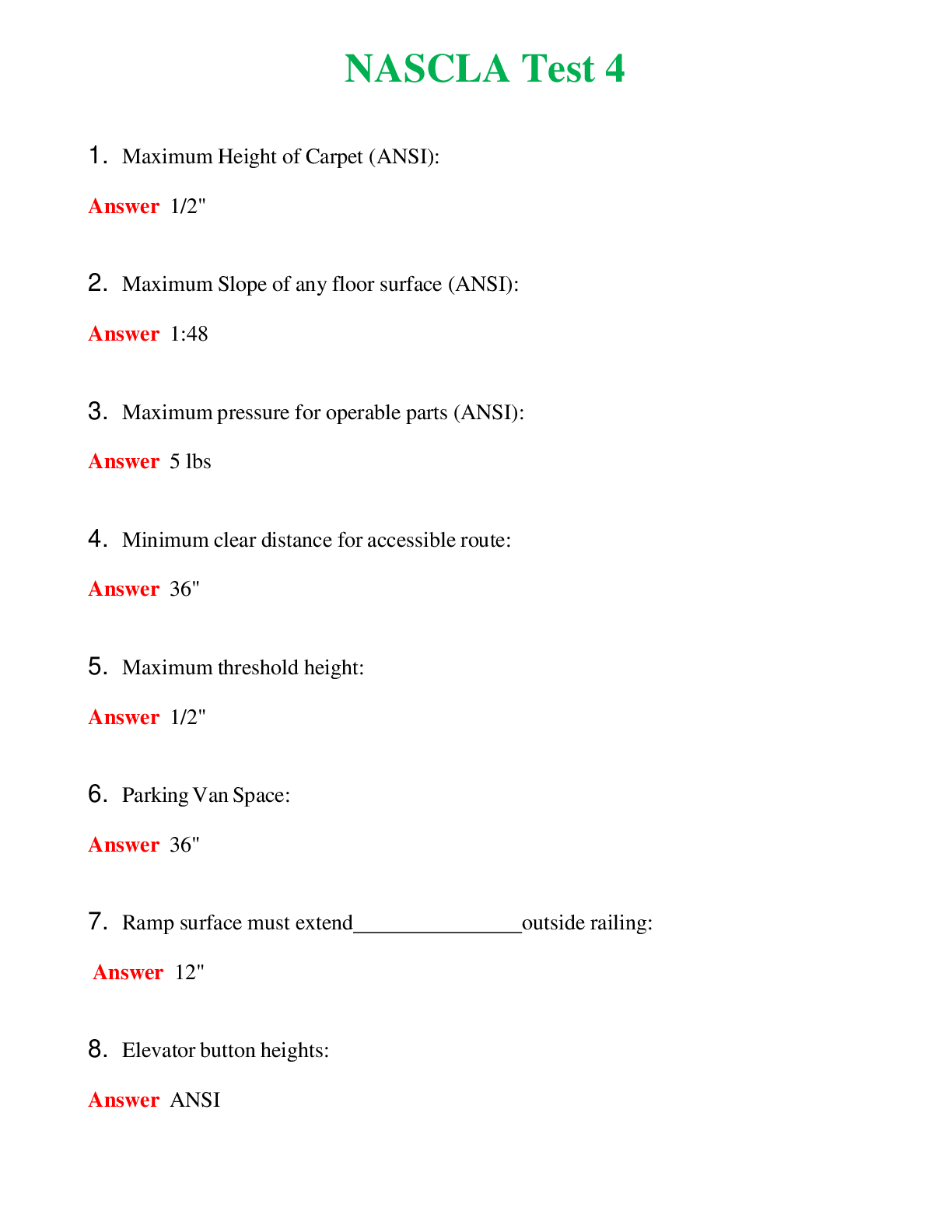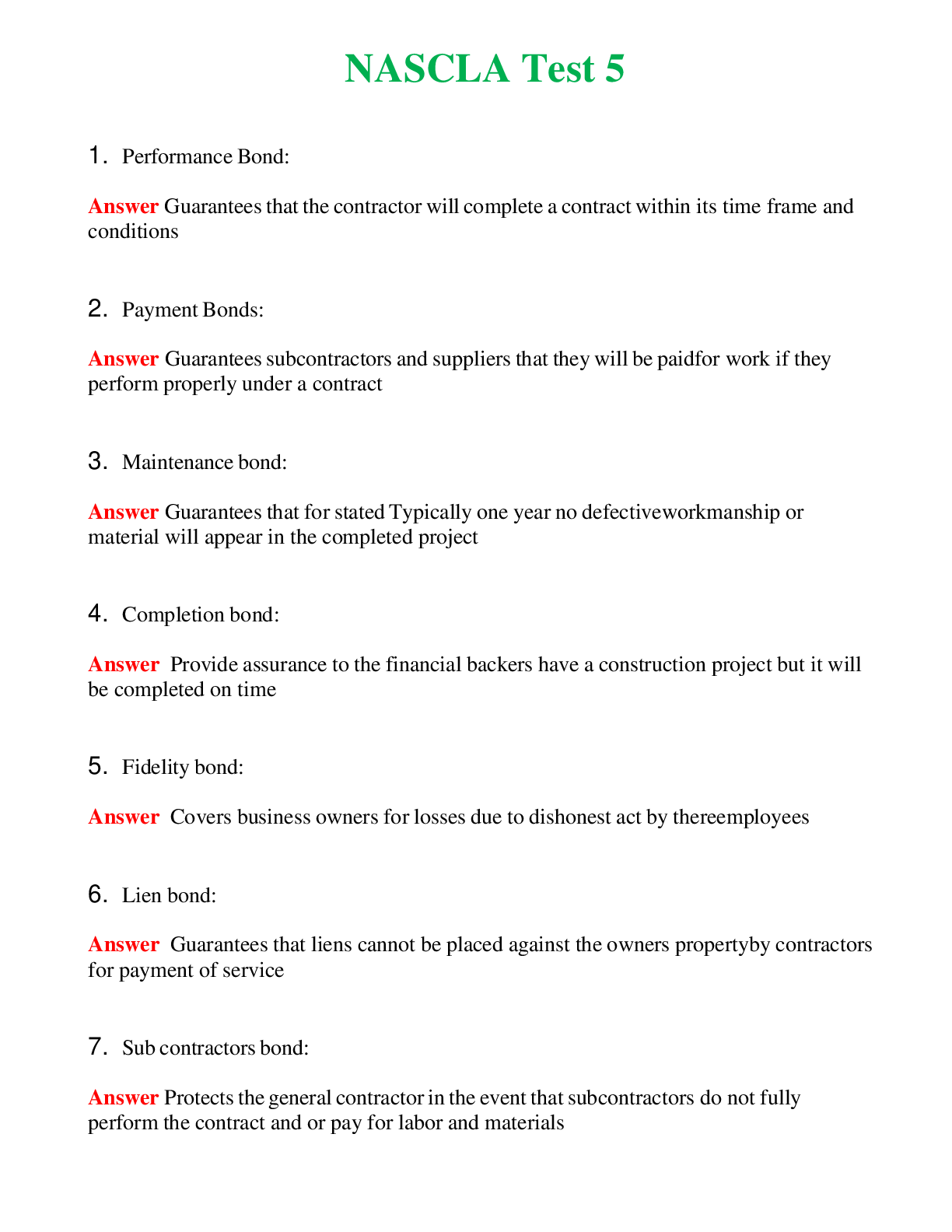MED SURG > EXAM > Med Surg Final Review/Final Exam Review (2023) With Complete Solution 2023-24 (All)
Med Surg Final Review/Final Exam Review (2023) With Complete Solution 2023-24
Document Content and Description Below
Med Surg Final Review/Final Exam Review (2023) 1. If I push the endotracheal tube too far, where will it go? Right lung so we will have absent breath sound in the left lung. Right bronchus intu ... bation 2. TIPS (Transjugular Intrahepatic Portosystemic Shunt): in Portal hypertension to decrease the gastric varices bleeding by decreasing the portal venous pressure a. This procedure reduces the portal venous pressure and decompresses the varices, thus controlling bleeding 3. Difference between embolic and thrombotic stroke: how do you explain it to a patient in a way that they understand? a. Ischemic Stroke: i. Inadequate blood flow to the brain from partial or complete occlusion of an artery causes ischemia distal to the occlusion ii. 80% of all stroked are ischemic strokes usually thrombolytic should work iii. It can be thrombotic or embolic iv. Atherosclerosis, a hardening and thickening of arteries, is the major cause of ischemic stroke. It can lead to thrombus formation and contribute to emboli. v. Thrombotic stroke: clot formation there vi. Embolic stroke: it means it came from somewhere else 1. Thrombotic and embolic are almost the same except that embolic means the blood clot came from somewhere else in the body you had clot in your carotid and it went to your brain b. Thrombotic stroke: i. Thrombosis occurs in relation to injury to a blood vessel wall and formation of a blood clot. ii. Result of thrombosis or narrowing of the blood vessel iii. Most common cause of stroke iv. Lacunar strokes are typically asymptomatic lacunar infarcts can be seen in MRI 1. When we do the MRI in 60-70 years old patient we may see minor infarcts it means the patient had lacunar strokes but it was totally asymptomatic c. Embolic Stroke: i. Occurs when an embolus lodges in and occludes a cerebral artery ii. Second most common cause of stroke iii. Rapid occurrence of severe clinical symptoms (loss of consciousness or neurologic deficits) iv. Onset is usually sudden and may or may not be related to activity v. Patient usually remains conscious, although he may have a headache vi. Basically patient has big clot that immediately starts to travel to the brain symptoms: dysarthria, weakness vii. We will not miss the embolic stroke 4. If a person has anaphylactic shock, what is the best way to figure out if the patient is doing ok? What is the first thing you want to check? Airway, Oxygen saturation - Anaphylactic shock can lead to respiratory distress due to laryngeal edema or severe bronchospasm, and circulatory failure from the massive vasodilation.8 The patient has a sudden onset of symptoms, including dizziness, chest pain, incontinence, swelling of the lips and tongue, wheezing, and stridor. Skin changes include flushing, pruritus, urticaria, and angioedema. In addition, the patient may be anxious and confused and have a sense of impending doom. 5. Identify an infections process. Lab results will be given, look at the lab results and figure out what is happening: if the WBC count is high, maybe there is an infection; if the WBC count is going too low after you start antibiotics neutropenia Normal WBC: 5,000 to 10,000 mm3 6. What is the concentration of epinephrine that we give for anaphylactic shock? 1:1,000; if we give IV because there is no choice of giving it intramuscular then the concentration will be 1: 10,000 a. Remember: i. 1 mg epi is in 10ml (preloaded syringe) usually we give 3-5 ml in anaphylactic shock if we are giving IV 0.3-0.5mg. ii. For ventricular fibrillation we give 1mg iii. For anaphylactic shock: 0.3-0.5mg iv. IV: 1:10,000; IM: 1:1,000 [Show More]
Last updated: 2 years ago
Preview 1 out of 56 pages
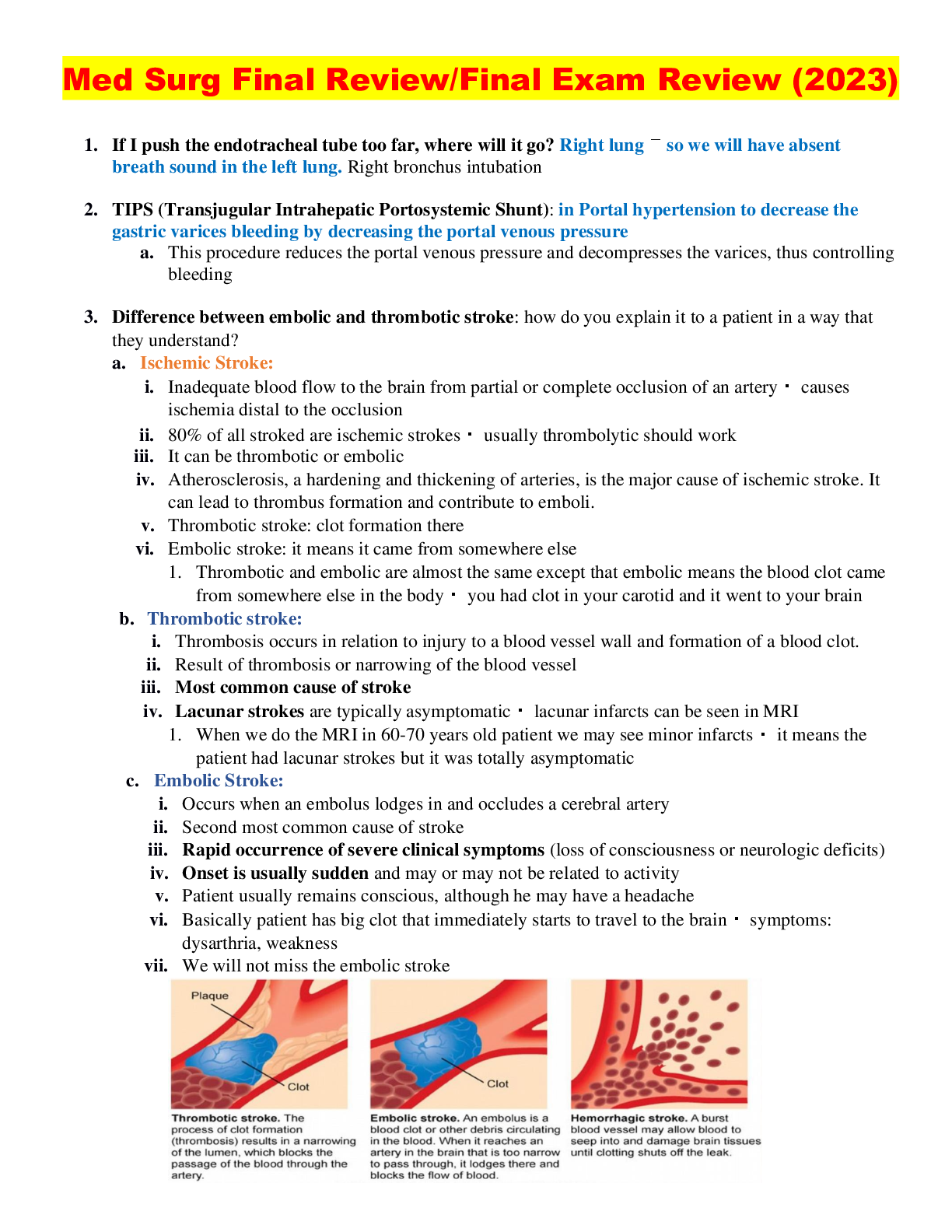
Buy this document to get the full access instantly
Instant Download Access after purchase
Buy NowInstant download
We Accept:

Reviews( 0 )
$10.00
Can't find what you want? Try our AI powered Search
Document information
Connected school, study & course
About the document
Uploaded On
May 30, 2023
Number of pages
56
Written in
All
Additional information
This document has been written for:
Uploaded
May 30, 2023
Downloads
0
Views
71



.png)









